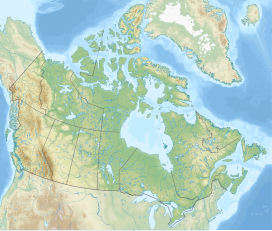| Mount Tekarra | |
|---|---|
 Mount Tekarra | |
| Highest point | |
| Elevation | 2,694 m (8,839 ft) [1] |
| Prominence | 279 m (915 ft) [1] |
| Parent peak | The Watchtower (2791 m) [1] |
| Listing | Mountains of Alberta |
| Coordinates | 52°50′30″N117°56′22″W / 52.84167°N 117.93944°W [2] |
| Geography | |
 | |
| Interactive map of Mount Tekarra | |
| Country | Canada |
| Province | Alberta |
| Protected area | Jasper National Park |
| Parent range | Maligne Range Canadian Rockies |
| Topo map | NTS 83C13 Medicine Lake [2] |
| Geology | |
| Rock age | Cambrian |
| Rock type | Sedimentary rock |
| Climbing | |
| First ascent | 1915 by Morrison Bridgland [3] |
| Easiest route | Scramble |
Mount Tekarra is a 2,694-metre (8,839-foot) mountain summit located in the Athabasca River valley of Jasper National Park, in the Canadian Rockies of Alberta, Canada. It is situated at the northwest end of the Maligne Range and is visible from Jasper and the Icefields Parkway. [4] The nearest higher neighbor is The Watchtower, 7.0 km (4.3 mi) to the east. [1]







